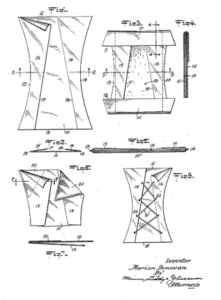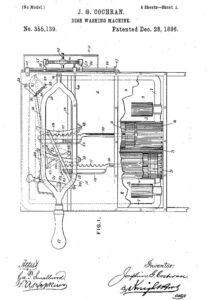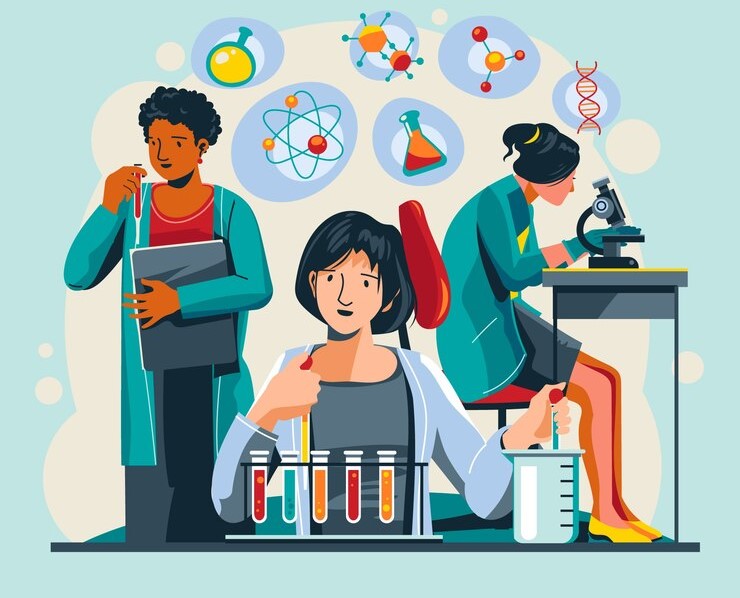Mother’s Day is celebrated to express love, appreciation, and gratitude towards Mothers and Mother figures for their unconditional love, support, and sacrifices. It is not only a time to express gratitude for the nurturing mothers in our lives but also an opportunity to celebrate their remarkable achievements and contributions to the world. While we often acknowledge mothers for their caregiving roles, it’s equally important to recognize their ingenuity and innovative spirit. Throughout history, countless Mothers have made significant contributions to the world of invention, leaving a lasting impact on society. This Mother’s Day, let us delve into the fascinating realm of mother inventors and explore a few of their groundbreaking creations.
The Pioneering Legacy of Mother Inventors
In the vast landscape of invention, certain individuals stand out not only for their groundbreaking creations but also for the barriers they shattered and the paths they forged. Among these pioneers are Mothers whose ingenuity and determination have left an indelible mark on history. From revolutionizing industries to empowering communities, these remarkable women have paved way for innovators and are inspiring generations to come.
From household conveniences to groundbreaking technologies, Mother inventors have played a pivotal role in shaping our daily lives. Despite facing numerous challenges and juggling multiple responsibilities, these remarkable women have demonstrated exceptional creativity and resilience. Their inventions have not only simplified tasks but have also revolutionized industries and sparked new avenues of innovation.
Let us explore a few innovative contributions by Mother Inventors.
- The Disposable Diaper, invented by Marion Donovan
 Marion Donovan, a mother of two, revolutionized infant care with her invention of the disposable diaper. In the late 1940s and early 1950s, Donovan, a mother frustrated with the inconvenience of cloth diapers, set out to create a more practical and convenient alternative. Donovan’s first breakthrough came when she developed a waterproof covering for cloth diapers using shower curtains. This innovation helped to prevent leaks and made diaper changes easier. Building on this idea, she then created the first disposable diaper prototype using layers of absorbent material, a waterproof outer layer, and a fastening system to keep the diaper in place. In 1951, Marion Donovan patented her disposable diaper design, known as the “Boater.” The disposable diaper revolutionized childcare practices by providing a more hygienic, convenient, and time-saving option for parents. Since Donovan’s initial invention, disposable diapers have undergone numerous improvements and innovations, including the introduction of elastic leg cuffs, resealable fasteners, and advanced absorbent materials. Today, disposable diapers are a staple product for parents around the world, offering convenience and comfort for both babies and caregivers.
Marion Donovan, a mother of two, revolutionized infant care with her invention of the disposable diaper. In the late 1940s and early 1950s, Donovan, a mother frustrated with the inconvenience of cloth diapers, set out to create a more practical and convenient alternative. Donovan’s first breakthrough came when she developed a waterproof covering for cloth diapers using shower curtains. This innovation helped to prevent leaks and made diaper changes easier. Building on this idea, she then created the first disposable diaper prototype using layers of absorbent material, a waterproof outer layer, and a fastening system to keep the diaper in place. In 1951, Marion Donovan patented her disposable diaper design, known as the “Boater.” The disposable diaper revolutionized childcare practices by providing a more hygienic, convenient, and time-saving option for parents. Since Donovan’s initial invention, disposable diapers have undergone numerous improvements and innovations, including the introduction of elastic leg cuffs, resealable fasteners, and advanced absorbent materials. Today, disposable diapers are a staple product for parents around the world, offering convenience and comfort for both babies and caregivers.
- Glass Bead Liquid Culture Technology, invented by Dr. Seema Prakash.
 Dr. Seema Prakash, a mother of two from Uttar Pradesh, invented Glass Bead Liquid Culture Technology (GBLCT). With Glass Bead Liquid Culture Technology (GBLCT), sterilized glass beads and liquid nutrients are used to replace the agar as the culture medium, where by using the glass beads, the cost of the media is brought down by 94% on a per plant basis. Glass Bead Liquid Culture Technology is different from traditional tissue culture, as traditional tissue culture uses agar as a gel, whereas in Glass Bead Liquid Culture Technology, the media is a liquid that surrounds the glass beads. This allows for aeration when the culture vessels are shaken and the glass beads offer a greater surface area between the piece of plant tissue that is used to initiate the tissue culture and the liquid medium. Using glass beads with liquid beneath them provides good root aeration for the plantlets and when combined with the high humidity in the culture vessels, results in plants that need less hardening because they develop a stronger root system. This invention will help in cost-effective plant cloning, which in turn will benefit Indian Farmers.
Dr. Seema Prakash, a mother of two from Uttar Pradesh, invented Glass Bead Liquid Culture Technology (GBLCT). With Glass Bead Liquid Culture Technology (GBLCT), sterilized glass beads and liquid nutrients are used to replace the agar as the culture medium, where by using the glass beads, the cost of the media is brought down by 94% on a per plant basis. Glass Bead Liquid Culture Technology is different from traditional tissue culture, as traditional tissue culture uses agar as a gel, whereas in Glass Bead Liquid Culture Technology, the media is a liquid that surrounds the glass beads. This allows for aeration when the culture vessels are shaken and the glass beads offer a greater surface area between the piece of plant tissue that is used to initiate the tissue culture and the liquid medium. Using glass beads with liquid beneath them provides good root aeration for the plantlets and when combined with the high humidity in the culture vessels, results in plants that need less hardening because they develop a stronger root system. This invention will help in cost-effective plant cloning, which in turn will benefit Indian Farmers.
- Dishwasher, invented by Josephine Cochrane
Josephine Cochrane, a mother, invented the first commercially successful dishwasher in the late 19th century. She was frustrated with the chipping and breakage of her fine Chinaware during handwashing, which resulted in designing of a mechanical dishwasher that used high-pressure jets of water to clean dishes. Her invention not only saved time and labour but also preserved delicate tableware, catering to the needs of households and commercial kitchens alike. In 1886, she patented the first practical dishwasher, which used high-pressure jets of water to clean dishes in a wire basket. The invention was showcased at the 1893 World’s Columbian Exposition in Chicago and was initially marketed towards hotels and restaurants. Over time, improvements and innovations have been made to dishwashers, including advancements in efficiency, water and energy consumption, noise reduction, and additional features such as adjustable racks and specialized wash cycles. Now, dishwashers are common household appliances, simplifying the chore of dishwashing for millions of people worldwide.
- Windshield Wipers, invented by Mary Anderson
 Mary Anderson, a widowed mother and entrepreneur, invented the windshield wiper in 1903. While traveling in New York City, Anderson noticed that streetcar drivers struggled to see through their windows during rainy weather. In search of a solution for this problem, she developed a manually operated windshield wiper system that cleared away rain and snow, improving visibility and safety for drivers. Mary Anderson patented the first operational windshield wiper in 1903, where the invention consisted of a swinging arm mechanism with a rubber blade that could be operated manually from inside the vehicle to clear rain or snow from the windshield. The windshield wiper remains an essential component of vehicle safety, helping drivers maintain clear visibility on the road in adverse weather conditions.
Mary Anderson, a widowed mother and entrepreneur, invented the windshield wiper in 1903. While traveling in New York City, Anderson noticed that streetcar drivers struggled to see through their windows during rainy weather. In search of a solution for this problem, she developed a manually operated windshield wiper system that cleared away rain and snow, improving visibility and safety for drivers. Mary Anderson patented the first operational windshield wiper in 1903, where the invention consisted of a swinging arm mechanism with a rubber blade that could be operated manually from inside the vehicle to clear rain or snow from the windshield. The windshield wiper remains an essential component of vehicle safety, helping drivers maintain clear visibility on the road in adverse weather conditions.
- Kevlar, invented by Stephanie Kwolek
Stephanie Kwolek, a chemist and mother, made a groundbreaking discovery while working at DuPont in the 1960s. In her pursuit of developing a lightweight fibre for tires, Kwolek accidentally created Kevlar, a high-strength synthetic material. Kevlar is a synthetic fiber known for its high tensile strength-to-weight ratio, making it incredibly strong yet lightweight. Kwolek was conducting research on high-performance fibers when she discovered a liquid crystalline solution that could be spun into exceptionally strong fibers. This discovery led to the development of Kevlar, which has since found widespread applications in various industries. Kevlar’s remarkable durability and resistance to impact made it an ideal material for bulletproof vests, revolutionizing personal protective equipment for law enforcement and military personnel worldwide. Kevlar is also used in helmets, gloves, and other protective gear. Additionally, Kevlar is utilized in aerospace applications, such as reinforcing composite materials in aircraft and spacecraft. Its high strength, durability, and heat resistance make it valuable in numerous industrial and consumer products, including tires, ropes, cables, and sporting equipment. Stephanie Kwolek’s invention has had a significant impact on various fields, enhancing safety, performance, and efficiency in numerous applications.
- Home Security System, invented by Marie Van Brittan Brown
 Marie Van Brittan Brown, a nurse and mother, developed the first home security system in 1966. Brown worked long hours as a nurse and often came home late at night. Her husband also worked irregular hours and Brown worried about who might knock on her door if she were home alone at night. Concerned about the safety of her family in their New York City apartment, Brown designed a system comprising peepholes, cameras, and two-way microphones connected to a monitoring device. In 1966, Brown first had the idea, and she soon applied for a patent alongside her husband Albert Brown. The system includes a motorized camera to project images on a monitor with four peepholes. In addition, the invention includes a remote control to unlock doors for easy access to first responders, in emergencies. Brown was later granted an award from the National Scientists Committee for her innovation. The innovative security apparatus laid the groundwork for modern home surveillance systems, empowering homeowners to protect their properties and loved ones.
Marie Van Brittan Brown, a nurse and mother, developed the first home security system in 1966. Brown worked long hours as a nurse and often came home late at night. Her husband also worked irregular hours and Brown worried about who might knock on her door if she were home alone at night. Concerned about the safety of her family in their New York City apartment, Brown designed a system comprising peepholes, cameras, and two-way microphones connected to a monitoring device. In 1966, Brown first had the idea, and she soon applied for a patent alongside her husband Albert Brown. The system includes a motorized camera to project images on a monitor with four peepholes. In addition, the invention includes a remote control to unlock doors for easy access to first responders, in emergencies. Brown was later granted an award from the National Scientists Committee for her innovation. The innovative security apparatus laid the groundwork for modern home surveillance systems, empowering homeowners to protect their properties and loved ones.
Honouring Mother Inventors
As we celebrate Mother’s Day, let’s pay tribute to the remarkable achievements of Mother inventors around the world. Their ingenuity, perseverance, and groundbreaking contributions continue to inspire generations of innovators. From everyday conveniences to life-saving technologies, the legacy of Mother inventors serves as a testament to the power of creativity and determination. So, let us cherish and celebrate the indomitable spirit of motherhood and innovation this Mother’s Day, recognizing the invaluable contributions of mother inventors to our shared human experience.
We wish you all a Happy Mother’s Day!!
Author: Megha Nadiger, Senior Patent Associate, Origiin IP Solutions
Please contact us at info@origiin.com to know more about our services (Patent, Trademark, Copyright, Contract, IP Licensing, M&A of companies)
Subscribe to YouTube Channel HERE
Join LinkedIn Group: Innovation & IPR
WhatsApp: +91 74838 06607




